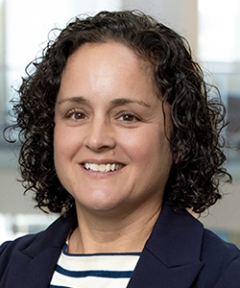Hot takes incoming

By Liz Beaulieu, Editor
Updated 9:37 AM CST, Mon December 16, 2024
Artificial intelligence were two words often mentioned at the recent HME News Business Summit.
At one point, Dexter Braff, founder and president of The Braff Group, who moderated a panel of investors and bankers, even said: “It’s a rule of this conference that I have to mention AI at least once.”
(Insert laughs and eyerolls.)
While borderline annoying, AI being a hot topic at the Summit is not surprising. I don’t think you can go to a health care conference today without it being a cornerstone of education and conversation.
But IMO, the biggest “hot take” at the Summit, to borrow the words of Charlotte Lawson, CEO and founder of Darby, who participated in a panel on what should be in an HME provider’s toolbox, wasn’t necessarily AI (though the two are intertwined and I’ll get to that later). It’s two other words: standardized data.
Much has been said over the years about the need for the HME industry to collect more data, as well as analyze and package that data as outcomes, all with the goal of elevating its position in the eyes of referral sources and payers.
But the elephant in the room: What should that standardized data be and, furthermore, how should it, ultimately, be used to rank HME providers?
Other areas of health care have standardized data and ranking systems. Home health care providers, for example, have the Home Health Consumer Assessment of Healthcare Providers and Systems (CAHPS) survey, which produces a star ratings system. But there’s nothing of the like for HME providers.
This is a big project of Tomorrow Health’s, said Craig Thompson, the company’s general manager, who also participated in the toolbox panel. The company has been working on a set of standardized data that not only can be meaningful from an operational standpoint – like turnaround completion rate – but also can be used to tell the “full story” of what providers do.
“We assume payers have all the data, but for most, HME is a black box,” he said.
Here’s where we come back to AI. Lawson’s “hot take” is for the industry to feed its standardized data into a small language model (SML) to advance automation efforts and increase use of AI. She challenged AAHomecare and other industry organizations to lead this effort.
Tom Ryan, president and CEO of AAHomecare, who was in the audience at the Summit, agreed.
It’s not often that you’re at an event and see these kind of discussions happening in real time across sessions and across speakers.
It’s exciting stuff!
Comments